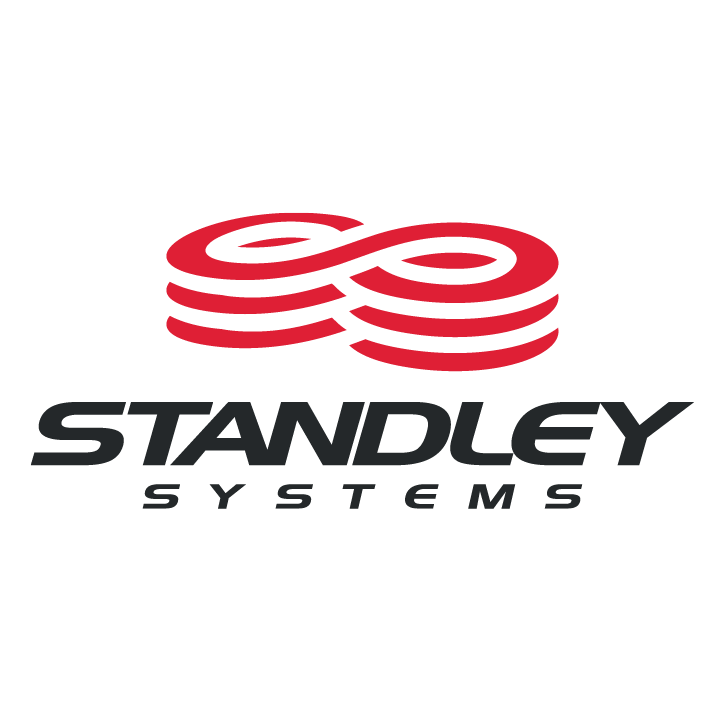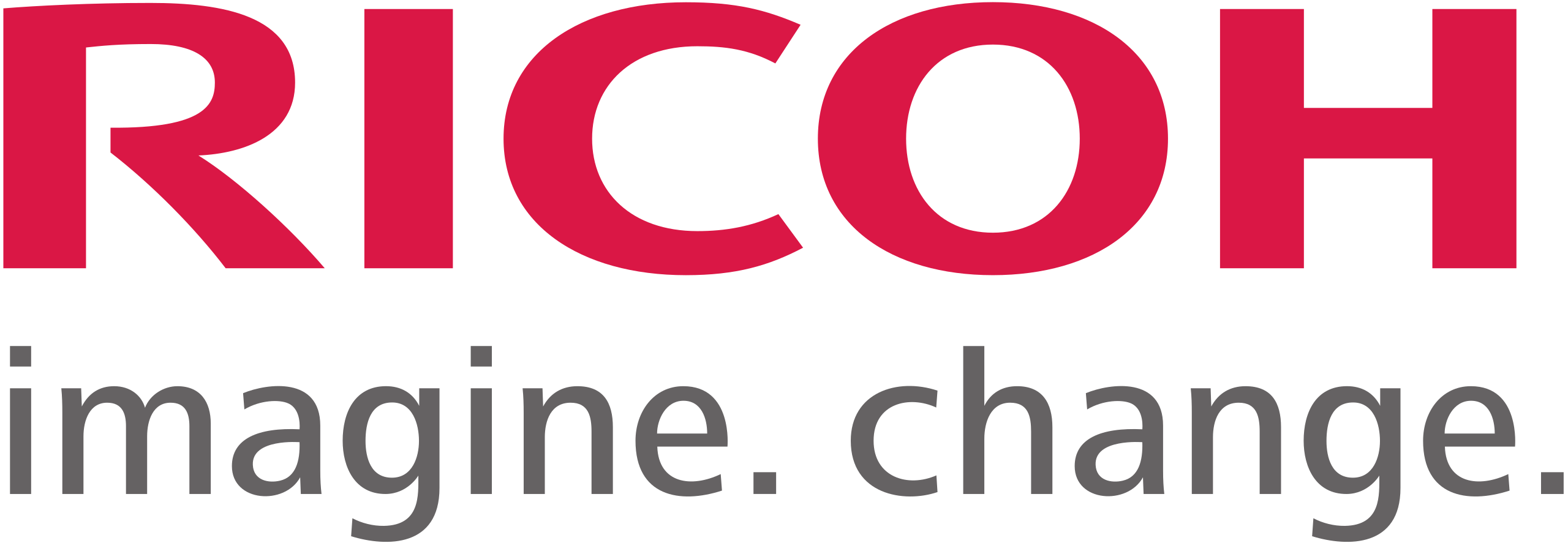10 min read
What is a Document Management System? A Detailed Guide
By:
Standley Systems Staff
on
July 16, 2024
Updated: July 16, 2024

What is a document management system? Managing documents efficiently is crucial for businesses of all sizes. Document management system software offers a solution that helps organizations store, manage, and track electronic documents and images of paper-based information.
This detailed guide will explore what a document management system is, its benefits, features, and how to choose the right solution for your business needs. By understanding and implementing effective document management system software, businesses can streamline their document management processes, enhance productivity, and maintain a competitive edge in the modern marketplace.
Whether you're dealing with vast amounts of data in healthcare, managing sensitive documents in legal practices, or organizing financial records, the right DMS can transform how you handle information and drive your business toward greater success.
What is a document management system?
A document management system (DMS) is a software solution that helps organizations manage the creation, storage, and control of documents electronically. It simplifies the process of tracking, managing, and storing documents, reducing the need for paper-based processes.
DMS ensures that documents are easily accessible, secure, and organized, which is essential for efficient business operations. By digitizing and automating document management, organizations can streamline their workflows and improve productivity.

What is document management software?
Document management software is the technology used to manage documents and content within an organization. It includes tools for organizing, storing, and retrieving documents, ensuring that they are easily accessible and secure. This software can handle a variety of document types, including text documents, spreadsheets, PDFs, and images, making it a versatile tool for businesses of all sizes. By centralizing document storage and management, document management software helps eliminate the inefficiencies associated with traditional paper-based processes.
Key components of document management software
Document management systems typically include features such as:
- Document Storage and Retrieval: Efficient storage and easy retrieval of documents.
- Version Control and Document History: Tracking changes and maintaining a history of document versions.
- Collaboration and Sharing Tools: Enabling multiple users to work on and share documents.
- Security and Access Control: Protecting sensitive information with robust security features.
Benefits of implementing a document management system
Implementing a DMS can provide numerous benefits, including:
- Improved Efficiency and Productivity: Automating document-related tasks reduces manual effort and speeds up processes.
- Enhanced Security and Compliance: Ensuring that documents are stored securely and comply with regulatory requirements.
- Better Document Organization and Retrieval: Structured storage and advanced search capabilities make finding documents easier.
- Reduced Storage Costs and Space: Digitizing documents reduces the need for physical storage space and associated costs.
Other features of document management system software
Effective document management is crucial for business success. Document Management System (DMS) software provides the essential tools for storing, organizing, and managing documents efficiently. This section explores the key features of DMS software, demonstrating how they can streamline workflows, enhance security, and improve overall document handling in any organization.
document storage and retrieval
A core feature of DMS software is its ability to store and retrieve documents quickly and efficiently. This includes indexing and categorizing documents for easy searchability. Advanced DMS solutions offer metadata tagging and full-text search capabilities, making it simple to locate specific documents within a large repository. These features significantly reduce the time spent searching for documents, allowing employees to focus on more critical tasks.
Version control and document history
DMS software allows users to track changes and maintain a history of document versions. This ensures that the most recent version is always accessible and previous versions can be retrieved if needed. Version control is crucial for maintaining document integrity and ensuring that all stakeholders are working with the latest information. It also helps in auditing and compliance, as the document history can provide a clear trail of changes and approvals.
Collaboration and Sharing tools
Effective DMS software includes tools for collaboration, enabling multiple users to work on documents simultaneously and share them securely with internal and external stakeholders. Features such as real-time editing, commenting, and document sharing enhance team productivity and streamline communication. Collaboration tools ensure that everyone is on the same page, reducing misunderstandings and improving project outcomes.
security and access control
Security is paramount in document management. DMS software provides robust security features, including encryption, access controls, and audit trails to protect sensitive information. Access control mechanisms ensure that only authorized users can access, edit, or share documents, safeguarding confidential data. These features are essential for maintaining data privacy and meeting regulatory requirements such as GDPR or HIPAA.
Integration with other software
Modern DMS software can integrate with other business tools, such as CRM, ERP, and email systems, to streamline workflows and improve productivity. Integration capabilities allow for seamless data exchange between systems, reducing manual data entry and minimizing errors. This integration ensures that document management is part of a broader digital ecosystem, enhancing overall business efficiency.
types of document management systems

cloud-based document management systems
Cloud-based DMS solutions offer flexibility and scalability, allowing businesses to access documents from anywhere with an internet connection. These systems typically require less upfront investment and are maintained by the service provider. Cloud-based DMS also offer automatic updates and backups, ensuring that the system is always up-to-date and data is secure. These solutions are ideal for businesses that require remote access or have limited IT resources.
On-premises document management systems
On-premises DMS solutions are installed and maintained on the company's own servers. They offer greater control over data and customization options but require a larger upfront investment and ongoing maintenance. On-premises DMS are ideal for organizations with strict data security policies or those operating in highly regulated industries. These systems provide complete control over data and allow for extensive customization to meet specific business needs.
Hybrid document management systems
Hybrid DMS solutions combine elements of both cloud-based and on-premises systems, offering a balance of flexibility and control. These systems can be tailored to meet specific business needs, providing the benefits of cloud access with the security and customization of on-premises solutions. Hybrid DMS are suitable for businesses that need the flexibility of cloud access but also require the control and security of on-premises systems.
WHAT IS AN ELECTRONIC DOCUMENT MANAGEMENT SYSTEM?
An electronic document management system (EDMS) is a type of DMS that focuses on the electronic management of documents. It includes features such as digital imaging, electronic forms, and workflow automation. EDMS are designed to eliminate paper-based processes and streamline document handling, making them ideal for businesses looking to digitize their operations. By converting paper documents into electronic formats, EDMS facilitate easier storage, retrieval, and sharing of documents.
ASSESSING YOUR BUSINESS NEEDS
Before selecting a DMS, it's important to assess your business needs. Consider factors such as the volume of documents, security requirements, and integration needs. Understanding your specific requirements will help you choose a solution that aligns with your business goals and operational workflows. Conducting a thorough needs assessment will ensure that the selected DMS addresses your pain points and enhances your business processes.
KEY FEATURES TO LOOK FOR
When choosing a DMS, look for key features such as:
- Ease of Use: A user-friendly interface that simplifies document management tasks.
- Scalability: The ability to grow with your business and handle increasing volumes of documents.
- Integration Capabilities: Compatibility with existing business tools and systems.
- Robust Security Measures: Advanced security features to protect sensitive information.
- Customer Support and Training: Comprehensive support and training resources to ensure successful implementation and usage.
COMPARING DIFFERENT DOCUMENT MANAGEMENT SYSTEMS
Conduct a thorough comparison of different DMS solutions. Evaluate their features, pricing, and user reviews to determine which system best meets your needs. Consider factors such as ease of implementation, customization options, and vendor reputation. Comparing multiple solutions will help you identify the best fit for your business and avoid potential pitfalls.
WHAT ARE DOCUMENT MANAGEMENT SYSTEMS?
The term "document management systems" refers to various software solutions designed to manage documents and information. It's essential to understand the differences and similarities between these systems to choose the right one for your business. Consider the specific requirements of your industry and business processes when selecting a DMS. Understanding the landscape of DMS solutions will help you make an informed decision and select a system that meets your unique needs.
STEPS FOR SUCCESFUL IMPLEMENTATION
Implementing a DMS involves several steps, including planning, configuration, data migration, and training. A detailed implementation plan ensures a smooth transition. Key steps include:
- Planning: Define your objectives, timeline, and budget.
- Configuration: Customize the DMS to meet your specific needs.
- Data Migration: Transfer existing documents into the new system.
- Training: Provide comprehensive training for users to ensure they can effectively use the system.
COMMON CHALLENGES AND HOW TO OVERCOME THEM
Common challenges in DMS implementation include user resistance, data migration issues, and integration difficulties. Addressing these challenges proactively can help ensure success. Strategies include:
- User Resistance: Involve users in the planning process and provide adequate training.
- Data Migration: Plan and execute data migration carefully to avoid data loss or corruption.
- Integration Difficulties: Work with vendors to ensure seamless integration with existing systems.
TRAINING AND SUPPORT FOR USERS
Providing comprehensive training and ongoing support for users is crucial for successful DMS adoption. This ensures that employees are comfortable using the system and can maximize its benefits. Training programs should cover basic and advanced features, as well as best practices for document management. Ongoing support helps address any issues that arise and keeps the system running smoothly.
WHAT IS A DOCUMENT MANAGER?
A document manager is a professional responsible for overseeing the DMS within an organization. They ensure that documents are properly managed, stored, and secured. The document manager plays a critical role in maintaining the integrity of the DMS and ensuring compliance with organizational policies and regulations. They also serve as a point of contact for any issues or questions related to document management.
REAL WORLD APPLICATIONS AND CASE STUDIES
DOCUMENT MANAGEMENT IN HEALTHCARE
In the healthcare industry, DMS software helps manage patient records, streamline workflows, and ensure compliance with regulations. Case studies show how healthcare providers use DMS to improve patient care, reduce administrative burdens, and maintain accurate medical records. By digitizing patient records and automating document management processes, healthcare providers can enhance the quality of care and improve operational efficiency.
DOCUMENT MANAGEMENT IN LEGAL FIRMS
Legal firms use DMS software to manage case files, streamline document retrieval, and improve collaboration among legal teams. Examples highlight how law firms leverage DMS to enhance client service, reduce paperwork, and ensure the security of sensitive legal documents. By implementing DMS, legal firms can improve case management, enhance document security, and increase productivity.
DOCUMENT MANAGEMENT IN FINANCE
Financial institutions utilize DMS software to manage financial records, enhance security, and improve regulatory compliance. Case studies demonstrate how banks and financial services firms use DMS to streamline operations, ensure data accuracy, and comply with industry regulations. By automating document management processes, financial institutions can improve efficiency, reduce risk, and enhance compliance.
DOCUMENT MANAGEMENT IN EDUCATION
Educational institutions benefit from DMS software by managing student records, facilitating collaboration, and improving administrative efficiency. Examples show how schools and universities use DMS to organize student information, support online learning, and reduce reliance on paper-based processes. By digitizing student records and automating administrative processes, educational institutions can enhance the quality of education and improve operational efficiency.
EMERGING TRENDS IN DOCUMENT MANAGEMENT SOFTWARE
The future of DMS includes trends such as increased automation, AI integration, and enhanced mobile access. These trends are transforming how businesses manage documents, offering greater efficiency and flexibility. As technology continues to evolve, DMS solutions will become more advanced, providing new opportunities for businesses to streamline their document management processes.

THE ROLE OF AI AND AUTOMATION
AI and automation are transforming DMS by improving search capabilities, automating repetitive tasks, and enhancing data analysis. AI-powered features such as intelligent search, document classification, and workflow automation are revolutionizing document management. By leveraging AI and automation, businesses can improve efficiency, reduce errors, and enhance decision-making.
WHY DOCUMENT MANAGEMENT SYSTEMS MATTER
In conclusion, document management system software serves as a cornerstone for modern businesses, providing indispensable benefits like heightened efficiency, fortified security, and enhanced document organization. By grasping the essence of what a DMS entails, its array of features, and the art of selecting and implementing the ideal solution, organizations can streamline their document workflows effectively, boosting overall productivity. Whether you operate in healthcare, legal, finance, or education sectors, adopting a robust DMS can revolutionize your operations and pave the way for sustained success.
Ready to transform your document management? Explore our comprehensive guide on choosing the right DMS for your business needs and start optimizing your workflows today. Unlock efficiency, security, and organization with the best document management solutions tailored to your industry.
FREQUENTLY ASKED QUESTIONS
WHAT IS A DOCUMENT MANAGEMENT SYSTEM?
A document management system is software that helps organizations manage, store, and track electronic documents.
HOW DOES DOCUMENT MANAGEMENT SOFTWARE WORK?
Document management software works by storing documents electronically, organizing them for easy retrieval, and providing tools for collaboration and security.
WHAT ARE THE BENEFITS OF USING A DOCUMENT MANAGEMENT SYSTEM?
Benefits include improved efficiency, enhanced security, better document organization, and reduced storage costs.
WHAT IS THE DIFFERENCE BETWEEN DOCUMENT MANAGEMENT AND CONTENT MANAGEMENT
Document management focuses on managing documents, while content management encompasses a broader range of content types, including web content and media files.
HOW SECURE IS DOCUMENT MANAGEMENT SYSTEM SOFTWARE?
DMS software provides robust security features, including encryption, access controls, and audit trails to protect sensitive information.
CAN DOCUCMENT MANAGEMENT SOFTWARE INTEGRATE WITH OTHER TOOLS?
Yes, modern DMS software can integrate with other business tools, such as CRM, ERP, and email systems, to streamline workflows.
HOW TO CHOOSE THE BEST DMS FOR YOUR BUSINESS?
To choose the best DMS, assess your business needs, compare different solutions, and consider key features such as ease of use, scalability, and security.












